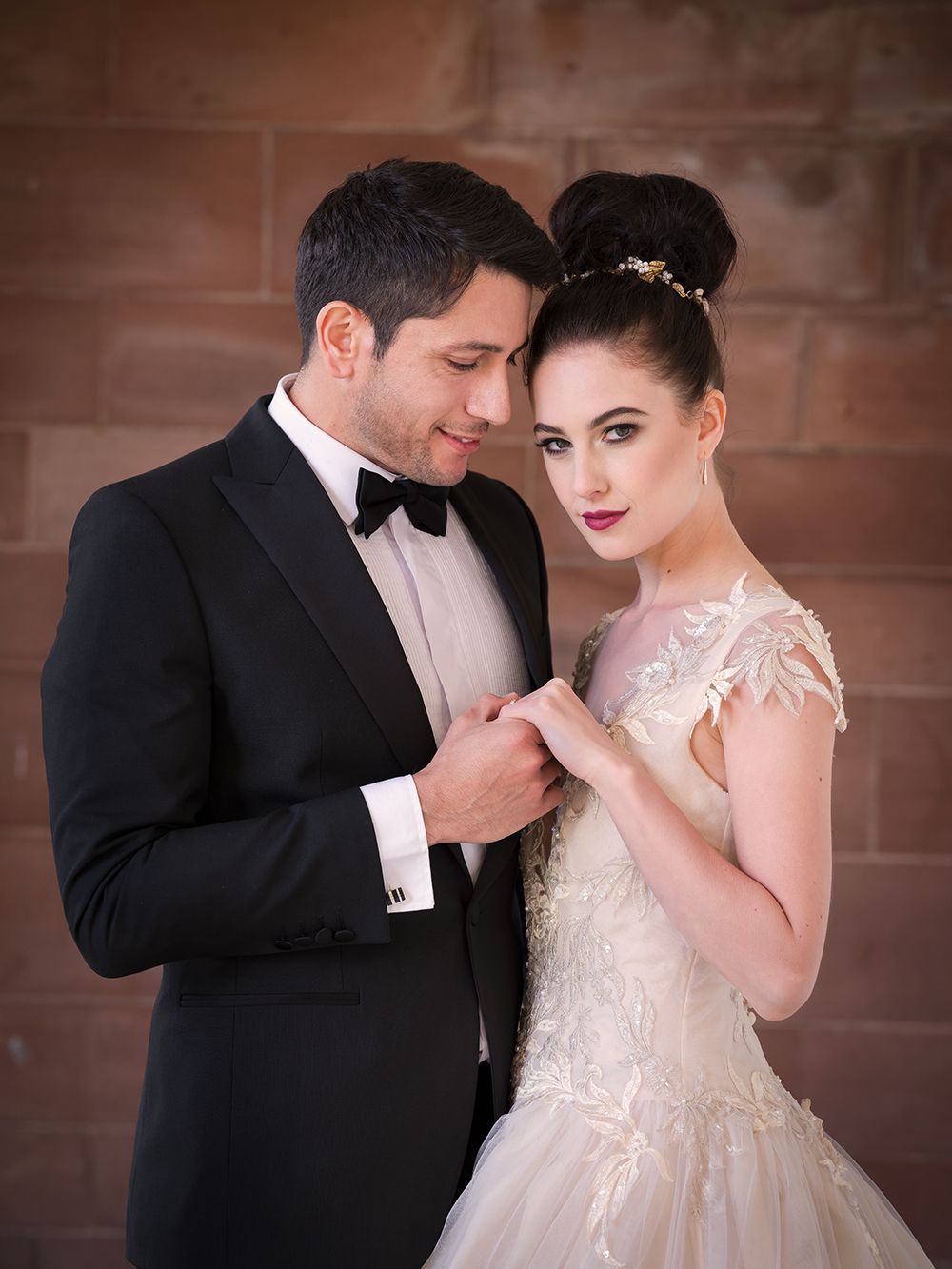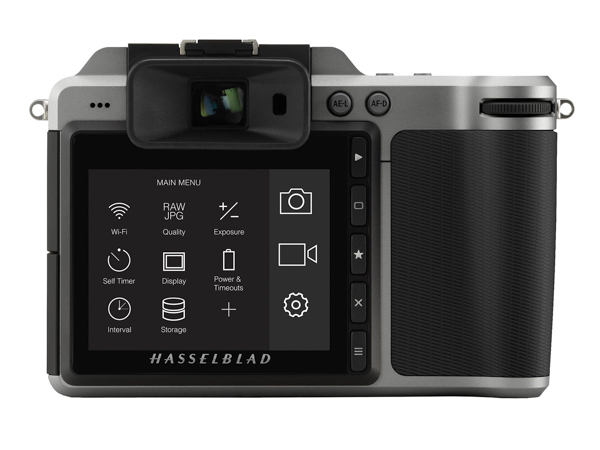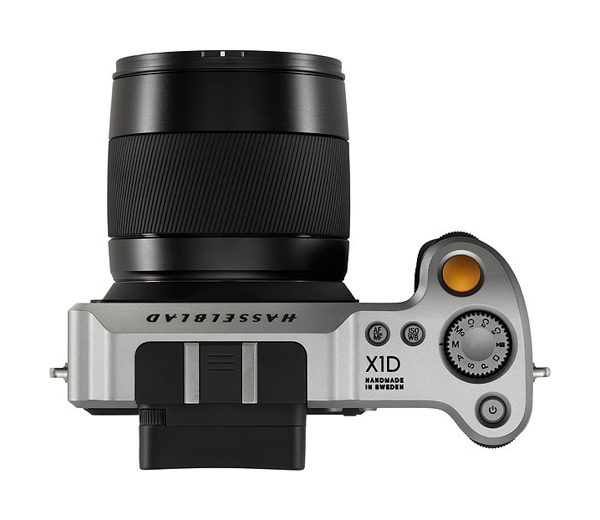North West-based photographer David Stanbury reckons he has the best job in the world. For the last 20+ years, alongside his wife Jane, he has run an award-winning wedding & portrait photography business that grew out of a simple passion for photography & creating images that he loved.

In 2013 David was given the highest honour of being awarded a fellowship in the British Institute of Professional Photography (BIPP) and the Society of Wedding & Portrait Photographers (SWPP) – the highest qualification a photographer can receive and to date has received over 200 International, national & regional awards for his photography.
Earlier this year, David was approached by Fuji, who were looking for professional photographers to test their GFX 50S. A longtime Hasselblad user, David already knew the benefits of medium format for his work and jumped at the chance to road test the then unreleased camera.
We recently caught up with David to talk photography and to hear his views on Fuji’s latest medium format camera.
 © David Stanbury
© David Stanbury
This must be a busy time of year for you, so thanks for taking the time to speak to us. Can you tell us a little bit about your background and how you got into photography?
I think it’s more a case that photography found me. My parents bought me a camera for my birthday and my Dad said “now go to college & learn how to use it” at the time my reply was why? But that push really sowed the seeds for a passion that is still as strong nearly 25 years later. My break into wedding photography was just as chaotic. Whilst at college I had really fallen in love with the darkroom and hand printing B & W images. A friend of a friend was looking for a wedding photographer but at the time the Pros would only shoot colour and the couple wanted B & W only, so we were introduced and my first wedding I shot, processed and printed the images. As no ‘pro’ photographers seemed to be shooting in B & W I received a steady infux of enquiries and bookings; it seems crazy now but my USP was that I shot B & W photographs. My move into Professional photography was again just as chaotic. I worked for a company and they went bust overnight and with a new home and young family, I found myself out of work. So with £500 of my redundancy money we struck a deal with a local landlord giving me 3 months free rent on a studio, bought a couch, a desk and with 4 16 x 20 prints, opened our first studio…. Yes I still have the couch 😉
 © David Stanbury
© David Stanbury
[gdlr_quote align=”center” ]We both are the luckiest people in the world, not only do we have the best job in the world travelling all over the world photographing gorgeous people happy & in love, but also being at the beginning of their new journey & documenting with our images two peoples lives change forever.[/gdlr_quote]
What equipment do you use?
In my bag at the moment is my Hasselblad H3D-31 II and a Canon 5D Mk III. Lens-wise I have an 80mm ƒ/2.8 & 28mm ƒ/4 for my Hasselblad (I love the 28mm and use this the most). On the Canon it’s a 16-35mm ƒ/2.8, 24-70mm ƒ/2.8 & 70-200mm ƒ/2.8. I use the 70-200mm the most as I shoot my main images on the Hasselblad and candid on the Canon.
 © David Stanbury
© David Stanbury
Did you always want to be a wedding photographer?
I have always been the sort of person that if I did something I had to do it ‘properly’, so from the start I wanted to pay for new kit and pretty much from day one, was shooting portraits and then asked to shoot weddings and this then grew. I pretty much fell in love with weddings from my first one – I just loved the adrenalin rush that you get from working under the most intense pressure and then seeing the couples faces when you showed them their images. I’m also very much a people person, I love to socialise and as a wedding photographer you get to meet so many people who are always happy and its just such an addictive career.
 © David Stanbury
© David Stanbury
You’ve used Hasselblad alongside your Canon gear for many years. How did you find the GFX compared to the Hasselblad?
For me its unfair to compare the two as I’m shooting with an H3D and the jump from that to the GFX is immense. What I can say is that I’ve always wanted a medium format camera that has high ISO, low noise and is light enough so I can carry all day and the GFX certainly ticks these boxes. The GFX has so many features that I feel makes it the perfect medium format camera for wedding photographers, the touch screen is sharp, fast and the ability to tilt makes it easy to get those high and low angles. I really fell in love with the EVF and the lenses I found fast & incredibly sharp. I’ve pretty much used them all but the GF32-64mm ƒ/4 & GF110mm ƒ/2 are my favourites and could pretty much shoot a full wedding with just these 2 lenses.
 © David Stanbury
© David Stanbury
Do you get involved in video with your wedding work?
I’ve just recently resurrected my YouTube channel (David Stanbury) to show Behind the Scenes footage from our personal shoots, weddings & workshops and am just as excited about getting ‘moving images’ into my workflow and think this is going to become a much bigger part of our shooting style.
 © David Stanbury
© David Stanbury
Do you shoot any personal projects or do the weddings keep you busy?
We are always busy with weddings, but I’m very much an advocate of ‘practice makes perfect’ and personal shoots are a perfect way to keep my brain ticking and my photography creative – It’s my testing ground for new ideas, styles and approaches to our photography. One thing I’m very mindful of is I NEVER want photography to become a job, so stepping out of my comfort zone, trying different things and creating new images is my hobby and what I do to relax.
 © David Stanbury
© David Stanbury
You offer 1-2-1 training for wedding photographers. Is it rewarding to give something back to a business you obviously enjoy?
Yes,YES,YES!!!! I have seriously the best job in the world, people pay me to be part of the biggest day of their life, they pay me to travel the world to photograph their day, photography companies have asked me to be a part of their future plans and new products, photography has given me so many amazing memories but mostly amazing friends and I feel its my duty to give back to an industry that has given me so much. One thing I’m most proud of is that I hope people now see wedding photographers with the respect they deserve. We have the hardest job in photography, we have only one chance to get it right whilst working in the most demanding of situations, we don’t have the luxury of reshoots or 8 hours for 1 image, we HAVE to deliver the goods fast and consistently week in week out, and this is what I want to get across to new photographers on our workshops who come to learn how to create their signature images in this demanding world.
David was speaking to Tim Stavrinou
David Stanbury FSWPP, FBIPP
About David
David Stanbury FBIPP, FSWPP is a Multi Award Winning Wedding Photographer based in the North West of England with a career spanning over 20 years & shooting weddings in the UK & Worldwide.
David’s accolades include over 200 National & Regional awards including UK Wedding Photographer of the Year, UK Wedding Album of the Year and a Finalist in the Prestigious Hasselblad Masters. David is proud to have received a Fellowship in Wedding Photography from the SWPP & the BIPP.
David has presented sell out workshops & seminars on all aspects of wedding photography throughout the UK, Europe and America. David is a photography consultant, mentor & Judge and has judged national & International photography competitions.
David’s style is described as stylish & timeless and is very much in demand by couples who require the very best in wedding photography. He has a passion for photography and creating the perfect image combining all the aspects of the Wedding but also understands that being a people person is just as important.
The Fuji GFX 50S is available to hire from our rental department, or for demonstration in our South London store. Call us on 020 7582 3294 or email admin@www.fixationuk.com for more info

















